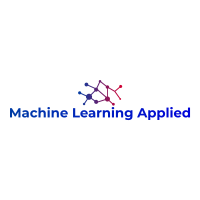Quant And Machine Learning Links: 20230903
Quantocracy: This is a curated mashup of quantitative trading links. Review of Parameter Tuning Methods for Nature-Inspired Algorithms - Geethu Joy, Christian Huyck, Xin-She Yang Almost all optimization algorithms have algorithm-dependent parameters, and the setting...
Quant And Machine Learning Links: 20230827
Quantocracy: This is a curated mashup of quantitative trading links. AutoAlpha: an Efficient Hierarchical Evolutionary Algorithm for Mining Alpha Factors in Quantitative Investment - Tianping Zhang, Yuanqi Li, Yifei Jin, Jian Li The multi-factor model is a widely used...
Quant And Machine Learning Links: 20230820
Quantocracy: This is a curated mashup of quantitative trading links. Portfolio Selection via Topological Data Analysis - Petr Sokerin, Kristian Kuznetsov, Elizaveta Makhneva, Alexey Zaytsev Portfolio management is an essential part of investment decision-making....
Quant And Machine Learning Links: 20230813
Quantocracy: This is a curated mashup of quantitative trading links. AutoGluon-TimeSeries: AutoML for Probabilistic Time Series Forecasting - Oleksandr Shchur, Caner Turkmen, Nick Erickson, Huibin Shen, Alexander Shirkov, Tony Hu, Yuyang Wang We introduce...
Quant And Machine Learning Links: 20230806
Quantocracy: This is a curated mashup of quantitative trading links. Portfolio Management: A Deep Distributional RL Approach - David Pacheco Aznar This thesis presents the development and implementation of a novel Deep Distributional Reinforcement Learning (DDRL)...
Quant And Machine Learning Links: 20230730
Quantocracy: This is a curated mashup of quantitative trading links. Adversarial Deep Hedging: Learning to Hedge without Price Process Modeling - Masanori Hirano, Kentaro Minami, Kentaro Imajo Deep hedging is a deep-learning-based framework for derivative...
Quant And Machine Learning Links: 20230723
Quantocracy: This is a curated mashup of quantitative trading links. Reinforcement Learning for Credit Index Option Hedging - Francesco Mandelli, Marco Pinciroli, Michele Trapletti, Edoardo Vittori In this paper, we focus on finding the optimal hedging strategy of a...
Dynamic Time Warping Nearest Neighbors
Dynamic Time Warping (DTW) We apply Dynamic Time Warping (DTW) to transformed time series of prices, as explained below, to find nearest neighbors for current stocks and ETFs. DTW can be defined as: In time series analysis, dynamic time warping (DTW) is...
Standard Deviation And Slopes Have Been Added To Daily Asset Analysis
Standard Deviation - For N=21, 42, ..., 231, 252 days, we compute the standard deviation of the adjusted close prices. Slopes - For N=21, 42, ..., 231, 252 days, we compute slopes for data as described below. After the data has been transformed, we compute a linear...
Quant And Machine Learning Links: 20230716
Quantocracy: This is a curated mashup of quantitative trading links. Financial Machine Learning - Bryan T. Kelly, Dacheng Xiu We survey the nascent literature on machine learning in the study of financial markets. We highlight the best examples of what this line of...
Portfolio Diversification Via Hierarchical Clustering
In this article, we cluster stock price time series with hierarchical clustering and Euclidean, correlation, and Jensen-Shannon distances to answer two questions regarding portfolio diversification. How diversified is a given portfolio? How can a diversified portfolio be constructed?
Portfolio Diversification Via K-means
Introduction We use the K-means algorithm to answer two questions regarding portfolio diversification. How diversified is a given portfolio? How can a diversified portfolio be constructed? Additionally, we use the multidimensional scaling (MDS) algorithm to visualize...
Mechanical Trading System: Entry = Array Of Dual Moving Averages, Exit = Fixed Period
In this article, we present a mechanical trading system that is a generalization of a dual moving average cross over system with a fixed time period for exits.
Visualizing Correlations Among Dow 30 Stocks Via NetworkX
NetworkX is a Python package for the creation, manipulation, and study of the structure, dynamics, and functions of complex networks.
Using daily adjusted close data from 20201118 to 20201218 for Dow 30 stocks, we compute correlation coefficients, apply a threshold of 0.8 to find similar stocks, and produce two types of graphs with NetworkX.
Paper: XPySom: High-Performance Self-Organizing Maps – Mancini et al 2020
In this paper, we introduce XPySom, a new open-source Python implementation of the well-known Self-Organizing Maps (SOM) technique. It is designed to achieve high performance on a single node, exploiting widely available Python libraries for vector processing on multi-core CPUs and GP-GPUs. We present results from an extensive experimental evaluation of XPySom in comparison to widely used open-source SOM implementations, showing that it outperforms the other available alternatives.
At no cost to you, Machine Learning Applied earns a commission from qualified purchases when you click on the links below.




